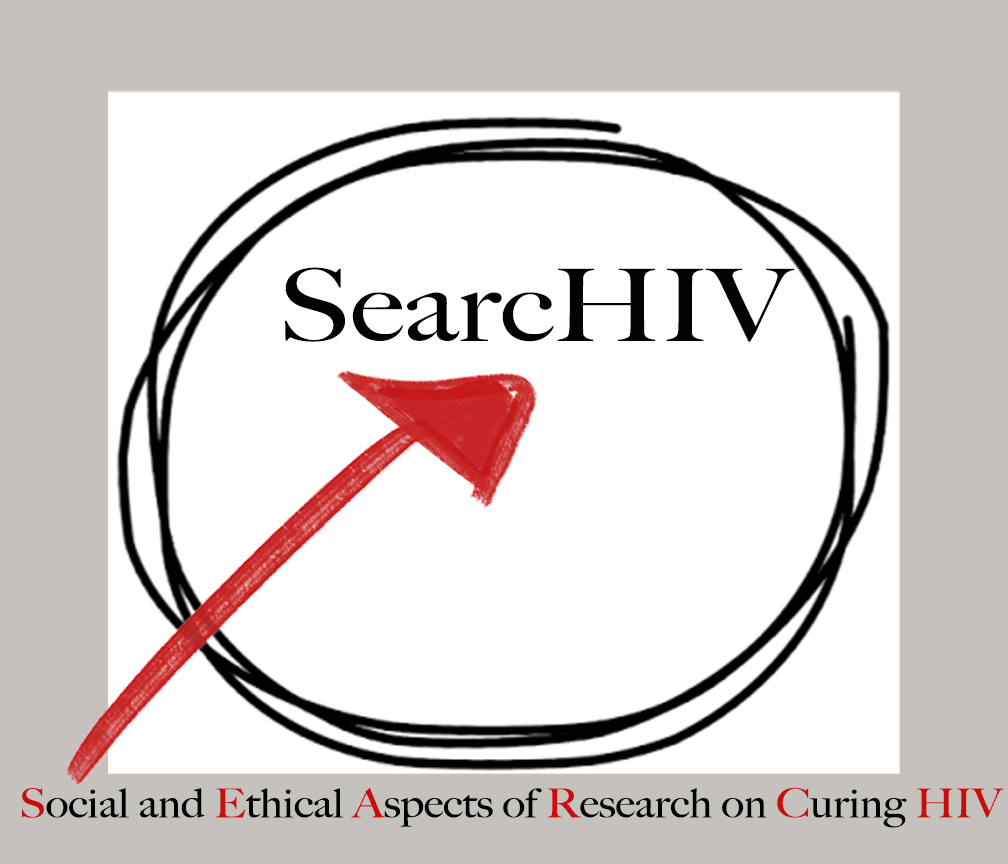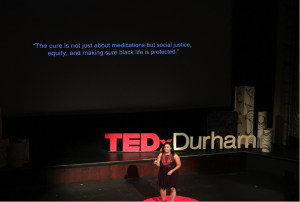By: Meredith Blumberg, 2BeatHIV Intern, UNC-CH Health Policy and Management Major
I love watching TED Talks; I find it fascinating to learn about such varied, yet similarly inspirational, topics through short presentations. However, my past viewing of TED Talks had been limited to YouTube or classroom projector screens. That’s why I was so excited to accompany Dr. Alison Mathews from the 2BeatHIV project to TEDxDurham at the Carolina Theatre, where she was invited to discuss crowdsourcing and it’s role community engagement for HIV cure research.
The theme of this year’s TEDxDurham conference was “Centers and Edges,” and the day was packed with presenters that discussed topics ranging from the use of selfies in social justice movements to the synchronization of brain waves as treatment of mental illness. These diverse topics created a fantastic web of inspiration and educational opportunities for the captivated audience. Included was Dr. Mathews’ talk about using crowdsourcing as a tool to improve community engagement for HIV cure research.
Dr. Mathews’ talk gave me insight into the 2BeatHIV project, from its inception to the present. In the style of many TED Talks, Dr. Mathews took the audience on a journey where she presented a problem – lack of communication between HIV cure researchers and community members at risk for acquiring HIV – and detailed how she developed the project using the idea of crowdsourcing contests. Crowdsourcing contests are a bottom-up approach to soliciting creative ideas from the public to solve a problem. I found myself swept up in Dr. Mathews’ early vision of the project. In the beginning, the project experienced some setbacks, including poorly attended events; however, through community partnerships the project experienced tremendous success by reaching nearly 800 people in person and 20,000 people online. Dr. Mathews’ talk embodied the theme of “Centers and Edges,” as it detailed the various methods a central hub of researchers can use to branch out into the community. Some of these methods include planning unique events such as having hip-hop artists debunk HIV conspiracy theories with the community; forming lasting partnerships with community organizations, local businesses, and key community leaders; and hosting community forums that allow researchers and community members to dialogue critically about how to best address the HIV epidemic. 2BeatHIV utilizes multiple methods to connect HIV cure researchers to community members, to provide a space for community members to voice concerns about the ethics of clinical research, and to develop crowd-sourced solutions to improve community engagement.
The inspiration and admiration I experienced after listening to Dr. Mathews’ talk was tempered when I considered some more jarring aspects of the conference. Many of the other presentations had a racial focus, which impacted the audience given the racially charged tragic shootings that had occurred in the week before. Dr. Mathews’ talk also touched on racial issues, which was appropriate considering that African Americans are at a disproportionately high risk for acquiring HIV/AIDS. Each of these racially focused talks seemed to touch a raw nerve with audience members, which could be felt when hearing collective sighs or expressions of agreement with the presenters. This was particularly evident when the pre-recorded talk, “How to Raise a Black Son in America” by Clint Smith, was played. The theme of this talk most directly correlated with the recent shootings, and showed the effort of TEDxDurham orchestrators to grapple with tough racial issues.
Despite these efforts, the conference was still disconnected from community members in Durham affected by these racial issues, as evidenced by a Black Lives Matter demonstration that took place outside the conference venue. The demonstration is another manifestation of why projects like 2BeatHIV, which work to connect community members with researchers and institutions, are so important. Community outreach to people living in Durham could have fostered cooperation and discussion on the recent racially charged violence and enabled TEDxDurham to serve as a space to creatively address pressing issues. Instead, many of the speakers and attendees were visibly uncomfortable with the demonstrators’ efforts to discuss race because they stayed inside the Carolina Theatre whispering rumors about the demonstration instead of engaging community members outside the building. This juxtaposition made me all the more committed to the importance of community engagement projects, like 2BeatHIV, in connecting communities to research. Ultimately, 2BeatHIV is not just about research, but ensuring that community voices are heard and the public is empowered to shape the future of HIV cure research.


